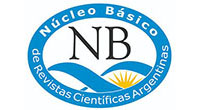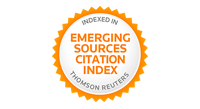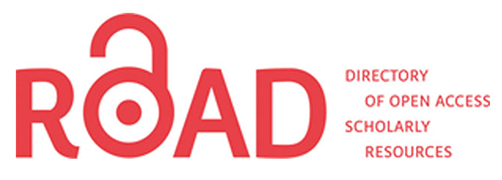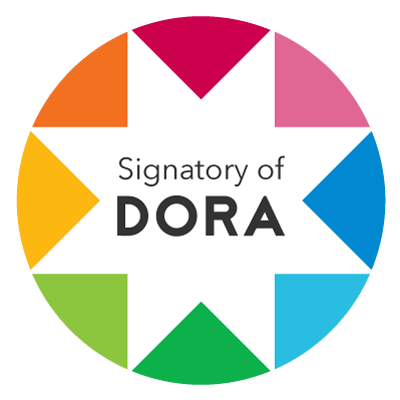Convergence Arts/media in the Era of Web 2.0
Analysis of Wish Cafe and Garden of Stories
DOI:
https://doi.org/10.24215/23142502e016Keywords:
Arts, contemporaneity, convergence, media, web 2.0Abstract
This article addresses some of the expressions of the convergence between arts and media in the era of Web 2.0. The paper analyses two new media artworks that display the emergence of those cultural transformations: Wish Café (Leonardo Solaas, digital platform, 2009) and The Garden of Stories (Project Biopus Group, interactive installation, 2012). From a comparative investigation, the article concludes by stating that user-generated content is a crucial feature of both works. Nevertheless, the main difference among them is that the two projects exemplify dissimilar expressions of the convergence between arts and media.Downloads
References
Alberro, A. (2011). ¿Qué es el arte contemporáneo? Pamplona, España: Universidad Pública de Navarra.
Carlón, M. y Scolari, C. (2012). Colabor arte: medios y artes en la era de la producción colaborativa. Ciudad Autónoma de Buenos Aires, Argentina: La Crujía.
Causa, E. (2009). El porqué del arte con vida artificial [Manuscrito no publicado]. La Plata, Argentina.
Estudio Biopus. (2018). Inicio. Recuperado de http://www.biopus.com.ar
García Canclini, N. (Dir.). (2009). Extranjeros en la tecnología y en la cultura. Ciudad Autónoma de Buenos Aires, Argentina: Fundación Telefónica/Ariel.
Giunta, A. (2014). ¿Cuándo empieza el arte contemporáneo? Ciudad Autónoma de Buenos Aires, Argentina: Fundación arteBA.
Green, J. y Jenkins, H. (2009).The Moral Economy of Web 2.0: Audience Research and Convergence Culture [La economía moral de la Web 2.0: Análisis de audiencias y cultura de la convergencia]. En J. Holt y A. Parren (Eds.), Media Industries: History, Theory and Method [Industrias de Medios: Historia, Teoría y Método] (pp. 213-225). Chichester, Inglaterra: Wiley-Blackwell.
Jenkins, H. (19 de junio de 2006). Welcome to Convergence Culture [Bienvenido a la Cultura de la Convergencia] [Entrada de blog]. Recuperado de http://henryjenkins.org/2006/06/welcome_to_convergence_culture.html
Jenkins, H. (2008). Convergence Culture. La cultura de la convergencia de los medios de comunicación. Barcelona, España: Paidós.
Jenkins, H. (12 de diciembre de 2009). The Revenge of the Origami Unicorn: Seven Principles of Transmedia Storytelling [La venganza del unicornio de origami: siete principios de la narrativa transmedial] [Entrada de blog]. Recuperado de http://henryjenkins.org/blog/2009/12/the_revenge_of_the_origami_uni.html
I.Sat. (2012). El Jardín de las Historias. Recuperado de http://isat.sur.amoelcine.com/isating/-/blogs/el-jardin-de-las-historias
Lévy, P. (1994). L’Intelligence collective. Pour une anthropologie du cyberspace [La inteligencia colectiva. Por una antropología del ciberespacio]. París, Francia: La Découverte.
Manovich, L. (2006). El lenguaje de los nuevos medios de comunicación. Barcelona, España: Paidós.
Prada, J. M. (2012). Prácticas artísticas e Internet en la época de las redes sociales. Madrid, España: Akal.
Smith, T. (2012). ¿Qué es el arte contemporáneo? Ciudad Autónoma de Buenos Aires, Argentina: Siglo Veintiuno.
Solaas. (s.f.). Wishcafe. Recuperado de http://wishcafe.net
Downloads
Published
How to Cite
Issue
Section
License
According to these terms, the material can be copied and redistributed by any means or in any format as long as a) the author and original source of the publication are quoted (magazine and URL of the work), access to the license is provided and whether changes have been made is mentioned; and b) the material is not used for commercial purposes.
The cession of non-exclusive rights means that after the publication (post print) in Boletín de Arte the authors can publish their work in any language, means and format; in such cases it must be mentioned that the material was originally published in this magazine.
Such cession also means the authorization of the authors for the work to be collected by SEDICI, the institutional archive of the National University of La Plata, and to be spread in the databases that the editorial team considers appropriate to increase the visibility of the publication and its authors.
Moreover, the magazine encourages the authors to deposit their productions in other institutional and thematic archives under the principle that offering the society the scientific and academic production without any restrictions contributes to a greater exchange of the global knowledge.
































